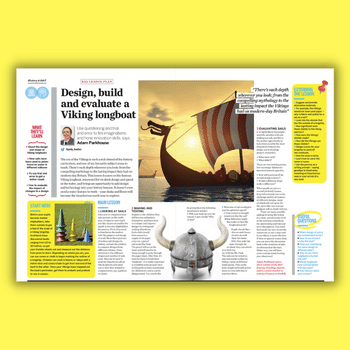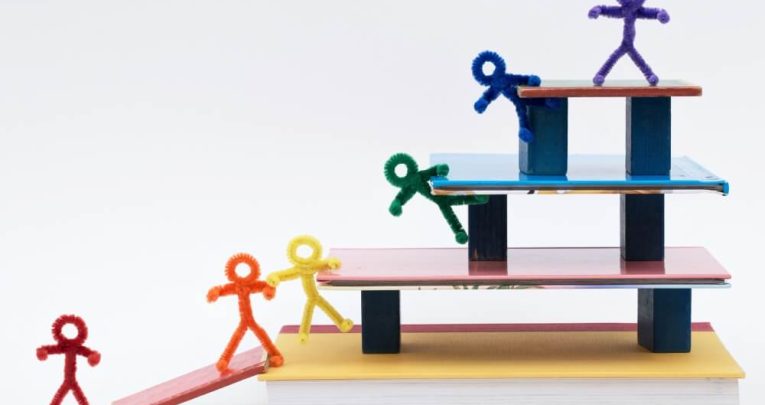How to design a primary history curriculum

Building a curriculum with historical content that is both ambitious and carefully sequenced can seem daunting task – but this is how to do it, says Stephen Caldwell…

Planning for progression in primary history requires us, as curriculum leaders, to rethink how we perceive progression.
We need to move away from the notion that one objective leads onto another, as tends to be the case in hierarchical subjects such as mathematics. The focus needs to be curriculum sequencing and revisiting key themes and concepts that can both broaden, and deepen children’s historical knowledge.
Curriculum as a narrative
Historical content should create a narrative in both the short and medium term that in due course culminates in an overarching, long-term narrative.
By creating narratives within the curriculum, we can help children to build on existing knowledge and link schemata (areas of knowledge) together to develop interconnected webs of understanding.
Within the history curriculum, there might well be multiple narratives being told simultaneously over a child’s time in primary school.
For example, my school has three curriculum strands which are broadly categorised as world, British, and local history. Within these three strands, smaller sub-strands emerge such as transport, explorers and ancient civilisations.
Big questions
‘Big questions’ allow history leaders to frame narratives and focus the learning within a unit of work. Instead of having a broad theme such as ‘The Ancient Egyptians’, try developing a focused question such as ‘What was it like to live by the River Nile in Ancient Egypt?’
These overarching questions should have multidimensional answers that require a breadth of knowledge to answer comprehensively. Of course, such a large question might need to be broken down into smaller questions that reveal new insights lesson on lesson.
An example of this could be that to answer the big question ‘How has Britain Changed from the Stone Age to the Iron Age?’, children would first need to answer ‘What was life like in the Palaeolithic era?’ or ‘What’s new about the New Stone Age?’.
Asking and subsequently answering these bite-sized questions allows children to feel a sense of progression as they chip away at the larger, overarching question.
Focused study
Commonly, a primary school history curriculum will mandate an era to be studied and provide no further detail of what is to be taught.
If we want a history curriculum to have progression, subject leaders need to be very specific about the aspects of each era that will be studied.
For example, ‘The Gruesome Greeks’ (cringe!) as a topic title lacks the necessary detail and direction to ensure learning is tightly focused.
This lack of clarity will also adversely impact any attempt at planning progression, as teachers will naturally go off at a tangent without returning to the core purpose of study.
Marjory Reeves once wrote that pupils should have the opportunity to “sit down in a good rich patch of history and stay there for a satisfying amount of time”. Children learn what they think about, so we need to give them numerous opportunities to recall and think about the content they are studying.
Unless children develop a depth of knowledge about something, they will be unable to talk about it confidently, and will subsequently be unable to write about it coherently.
For example, World War II is a multifaceted topic where teachers run the risk of skimming over several key themes aiming to give children a broad overview.
Our school has chosen to focus solely on the Battle of Britain, viewing it from the perspective of ‘a significant turning point’.
By doing this, children will have detailed knowledge of the events at Dunkirk, all the way up to the immediate aftermath of the Battle of Britain.
Only by studying topics in depth will children be able to grasp historical concepts such as change and continuity, similarity and difference, and cause and consequence.
Threshold concepts
When designing a curriculum that encompasses a model of progression, the first thing that needs to be clarified is ‘what’ the children are making progress in.
Trending
A core intention of any history curriculum should be to develop children’s historical knowledge. However, the key aim is not just to develop isolated pockets of knowledge, but to develop webs of interrelated schema.
One way to achieve this is to focus on conceptual development over time. Our school curriculum was influenced by the work of Mary Myatt, who describes words as being conceptual holding baskets.
These holding baskets are often referred to as threshold or substantive concepts. These concepts thread through a history curriculum and provide a mechanism for term on term, year on year, deepening of understanding.
Take the word ‘trade’, for example. When studying the Great Fire of London in KS1, children will understand that London was the centre of trade at the time and the reasons for this.
The following year, children revisit trade when learning how trade between settlements started during the Neolithic period. This then develops into the Bronze and Iron Age, where hillforts were built to protect trade routes that now spanned into Europe.
Later in LKS2, children will learn how the Egyptian pharaoh Hatshepsut developed trade routes, leading to a time of prosperity for the Ancient Egyptians.
Through intentional curriculum design, the concept of trade will appear again and again. Each time we encounter a concept, our understanding of it becomes denser and more nuanced. Other threshold concepts could include: ‘invasion’, ‘monarchy’, ‘afterlife’, ‘settlements’ or ‘kingdom’.
By identifying threshold concepts, we can then plan how other subjects could complement children’s conceptual development to creating meaningful cross-curricular links.
Content knowledge
If progression is to be preserved, a school’s history curriculum needs to have some semblance of permanence. Primary schools are very much guilty of reinventing the wheel when it comes to writing schemes of work (or topic planning).
Furthermore, asking an NQT to develop the subject knowledge required to plan a year’s worth of history (as well as getting to grips with English and maths) is not a realistic, nor fair, expectation.
NQTs should be handed high-quality, tried and tested schemes of work that they can adapt to their own teaching style and the needs of their class.
Our big questions remain the same year on year because they contribute to an overarching historical narrative. Underpinning each big question, a knowledge organiser is written.
Year group/age phase colleagues work collaboratively to identify the essential substantive knowledge required to comprehensively answer the big question.
Research by the Sutton Trust identifies teachers’ content knowledge as key to driving student outcomes. Knowledge organisers allow teachers to discover and familiarise themselves with the ‘best that has been thought and said’ in each topic.
Put simplistically, knowledge organisers should encapsulate what Ofsted refer to as your ‘intent’ for each unit – what you want children to learn.
From this, teachers work together to develop a scheme of work that lays out the order in which concepts will be taught. As well as detailing the threshold concepts and substantive knowledge, a knowledge organiser will also lay out the disciplinary skills that will be taught throughout a unit of work.
Thinking as a historian is a vital part of the curriculum and by writing schemes of work, teachers can carefully plot when children will have the prerequisite knowledge needed to interpret and appraise different sources of information or to pursue their own historically valid questions.
Steven Caldwell is an assistant headteacher at a primary school in Cheshire with experience of working across all age phases. He is a history and geography subject leader and a mathematics SLE.











